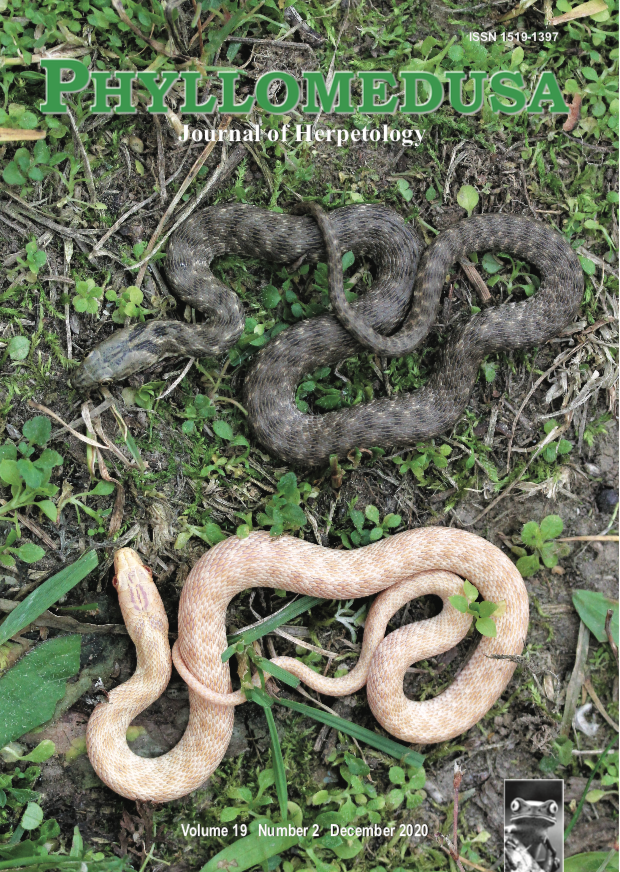Predicting distributions of rare species: the case of the false coral snake Rhinobothryum bovallii (Serpentes: Colubridae)
DOI:
https://doi.org/10.11606/issn.2316-9079.v19i2p141-164Keywords:
core habitat areas, disjunct distribution, marginal habitat, species distribution modelsAbstract
Predicting distributions of rare species: the case of the false coral snake Rhinobothryum bovallii (Serpentes: Colubridae). Typically, the lack of enough high-quality occurrence data makes it diffcult to defne the geographic distribution of rare species. However, species distribution models provide a powerful tool for biodiversity management, including efforts to predict the distributions of rare species. Herein, new and historical data are used to model the distribution of the False Tree Coral snake, Rhinobothryum bovallii. The prediction map reveals a disjunct distribution for this species, from the Central American Isthmus to the northwestern portion of South America, with the species occupying lowlands and premontane forests below about 1500 m elevation. We identifed 491,516 km2 of suitable habitat for R. bovallii (minimum training presence threshold of 0.424) and 59,353 km2 of core habitat, with concentrations in three relatively isolated core areas (10-percentile training presence threshold of 0.396), as follow: (1) a “northern core” along the Pacifc and Caribbean coasts of Panama; (2) a “central core” in the Middle Magdalena Valley in Colombia; and (3) a “southern core” in the Ecuadorian Chocó. The occurrence of this species has a strong positive association with low precipitation seasonality, high precipitation in the warmest quarter, and low variability in annual temperature. Xeric and semiarid areas are unsuitable for this species and may pose environmental barriers limiting its distributional range. These results may lead to the discovery of additional populations of R. bovallii, identify priority survey areas, and by determining the extent of its natural habitat promote effective conservation strategies.
Downloads
Downloads
Published
Issue
Section
License
Copyright (c) 2020 ESALQ-USP

This work is licensed under a Creative Commons Attribution-NonCommercial-NoDerivatives 4.0 International License.
All material originally published in Phyllomedusa belongs to Escola Superior de Agricultura Luiz de Queiroz - Universidade de São Paulo. All contents are under a license of Creative Commons BY-NC-ND.


 Impact Factor (JCR): 0.600
Impact Factor (JCR): 0.600 CiteScore: 1.0
CiteScore: 1.0